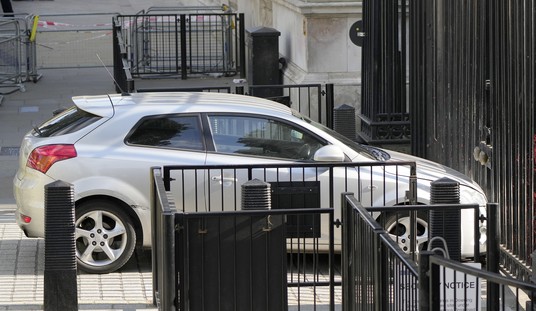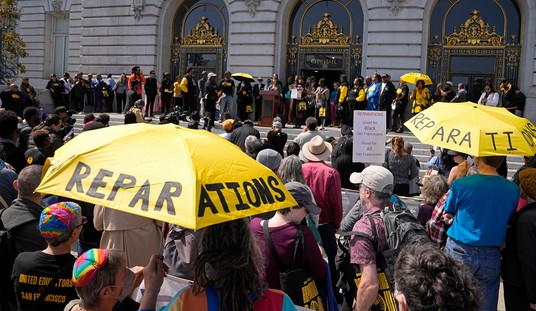Editor's note: This piece was co-authored by Ann H. McLean.
Why should Americans demand reversal of the decision by the now disbanded “Congressional Naming Commission” to remove the Moses Ezekiel Reconciliation Monument from Arlington Cemetery?
Beyond being one of the greatest works of art in Arlington, President Woodrow Wilson declared at the monument’s unveiling in 1914, that it “represented the best of America—a spirit of reconciliation, democracy, freedom, heroism and patriotism.”
Today, an even more important reason to oppose removal is that such an act would validate the woke and communist agenda to erase history, divide America, and destroy citizens’ appreciation of and connection to a vital part of their redemptive history.
That radical agenda has crept into our culture for decades, but it greatly accelerated with Covid lockdowns of 2020 and the death of George Floyd. That’s when urban rampages brought unprecedented property destruction across America, orchestrated by Antifa—a far-left coalition of cells of violent anarchists—and the Marxist-led Black Lives Matter. Targets for destruction then shifted to American heritage monuments. First came the tearing down of statues of Columbus—who discovered the Americas and opened the way for European colonization, and then came the toppling of Confederate leaders of slave-holding southern states.
So determined and organized are the radical America-hating history destroyers, that in many states no monuments or statues of Columbus or Confederate Civil War heroes are left standing. This partial erasure of history won’t appease the evil powers leading the radical assault on America from within. They fully intend to take down the Founders next and then the United States itself.
Recommended
So, it’s time to take a stand and put an end to this subversion and destruction. And it turns out that the Moses Ezekiel Reconciliation monument in Arlington Cemetery is just the place to stand our ground, fight, and win.
Arlington Cemetery is the most hallowed land in America and is inextricably linked to both the nation’s founding family and the leading family of the Confederacy. The Arlington House plantation was built by George Washington’s adopted son, Custis, whose daughter Mary Custis married Robert E. Lee. They inherited the 1,100-acre plantation before the latter became the Confederate General-in-Chief. Lee would fight for the right of the southern states to secede, but not to preserve slavery, which he opposed. He freed the Arlington plantation slaves before Lincoln’s Emancipation Proclamation.
The Lee’s had to forfeit that property to the Union after the outbreak of the Civil War. Part of the Arlington plantation estate began conversion to cemetery use under order of Union Secretary of War Edward Stanton, and it became a National Cemetery for Union and Confederate soldiers by 1864.
In 1898, when the Spanish American War erupted, former Confederate states supplied important U.S. forces, “burying the hatchet,” to fight along-side former Union foes. Reconciliation and teamwork between the Northern and Southern soldiers facilitated a swift victory in that war—lasting only four-months.
President McKinley, a Union army veteran, recognized this healing that made the military exemplary. He told the nation, “Sectional feeling no longer holds back the love we bear each other… The Union is once more the common altar of our love and loyalty, our devotion and sacrifice.”
In June 1900, McKinley supported a bill to establish a Confederate section in Arlington Cemetery. That resulted in the reintering of some 260 Confederate bodies from various burial places to a designated section of Arlington Cemetery. A few years later, Secretary of War William Taft received a request for erecting a monument in that Confederate burial area—Section 16. In 1906 it was granted.
Moses Ezekiel, a world-renowned American sculptor, the first Jewish cadet at Virginia Military Institute who served in Confederate army in the Civil War, was chosen to create the monument that would capture the fullness of the spirit of reconciliation, serve as memorial to the hundreds of dead Confederates buried in Section 16, and be recognized as a prominent “Peace Monument,” commemorating the reunification of the North and South.
In 1912, then President Taft, presided over the cornerstone dedication ceremony, describing what was to follow as “a beautiful monument to the heroic dead of the South,” calling the ceremony “a benediction of all true Americans.”
Two years later, then President Woodrow Wilson unveiled the completed monument as “an emblem of a reunited people,” and “to declare this chapter in the history of the United States closed.” Further, he said that “such a monument would be a symbol of our duty and our privilege to be like the country we represent.”
Fast forward –To remove the Moses Ezekiel Reconciliation monument from Arlington Cemetery—blessed by three U.S. presidents—would not only dishonor those presidents, but also all veterans of the Union and Confederate armies that came together in reconciliation. What does it say, that at that time, when society had more stake in the conflict and more reason to choose not to settle their differences, they chose reunification and reconciliation?
That the woke would have us undo that, take down American heritage monuments, and reopen the wounds of the past on settled matters reveals their true aim: division. The Arlington Confederate Reconciliation Monument is a time capsule carrying valuable historical lessons from the past. Those lessons include showing us how former foes in a war over interpretations of the Constitution and States’ Rights settled their differences on the battlefield, then worked through the difficulties of Reconstruction, and finally found the magnanimity to reconcile, and erect a memorial to all of that. Ezekiel’s artistic genius is seen in his realistic rendering of the hardship of war while also portraying reconciliation through olive branches and the victorious figure at the top turning a sword into a plowshare.
As Moses Ezekiel’s last and greatest work, the Reconciliation Monument also served as his burial headstone. Removal of this monument is both antisemitic and a potential illegal desecration of a grave memorial.
This unique masterpiece monument should be left untouched so it can continue to speak for itself of peace and reconciliation to future generations.
Scott S. Powell is senior fellow at Discovery Institute & author of a new book, Rediscovering America, a #1 Amazon New Release (https://www.amazon.com/dp/1637581599).
Ann H. McLean received her M.A. and Ph.D. from the University of Virginia, and serves on The Jefferson Council, the Virginia Council, and the Republic of Virginia preservation groups.

























Join the conversation as a VIP Member